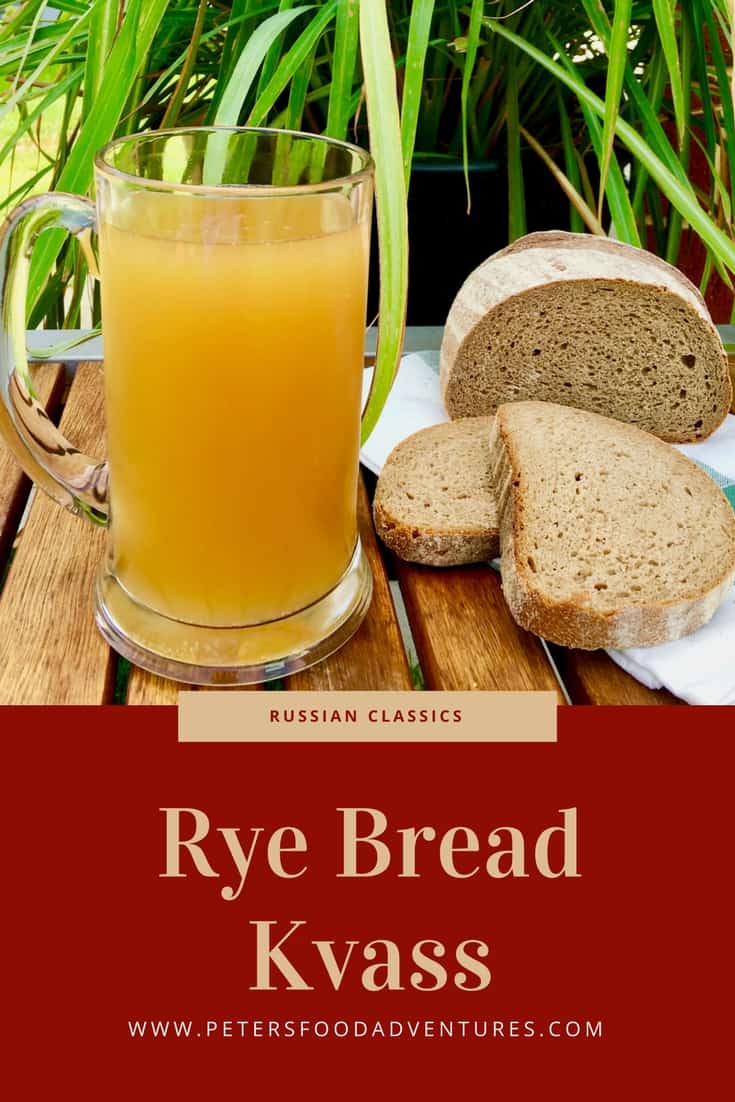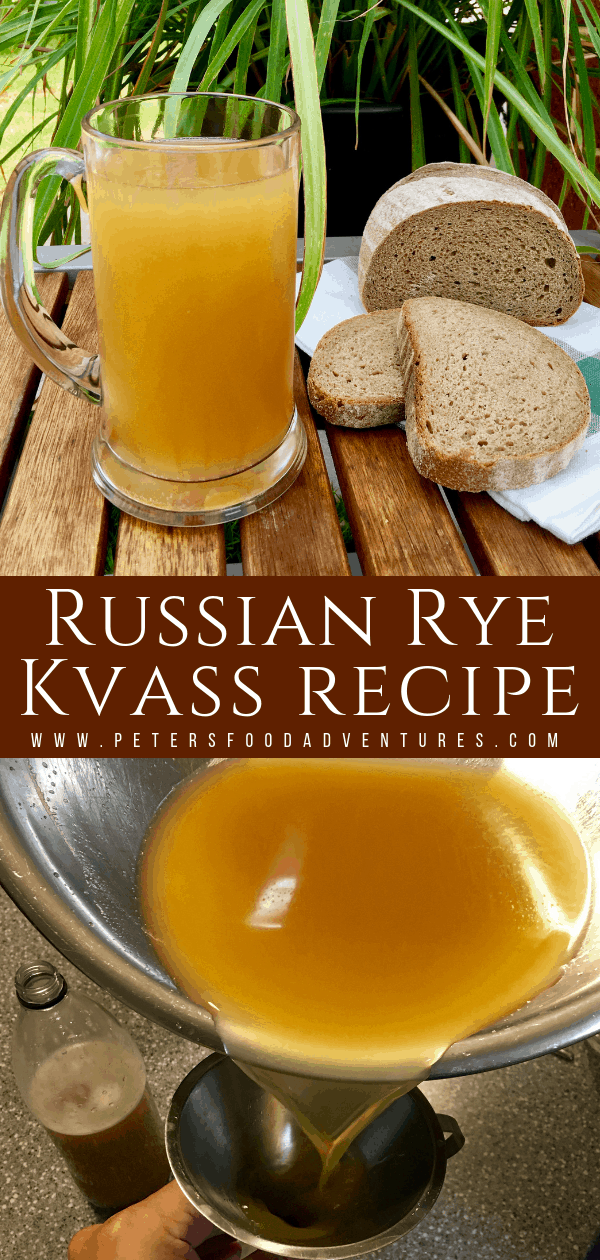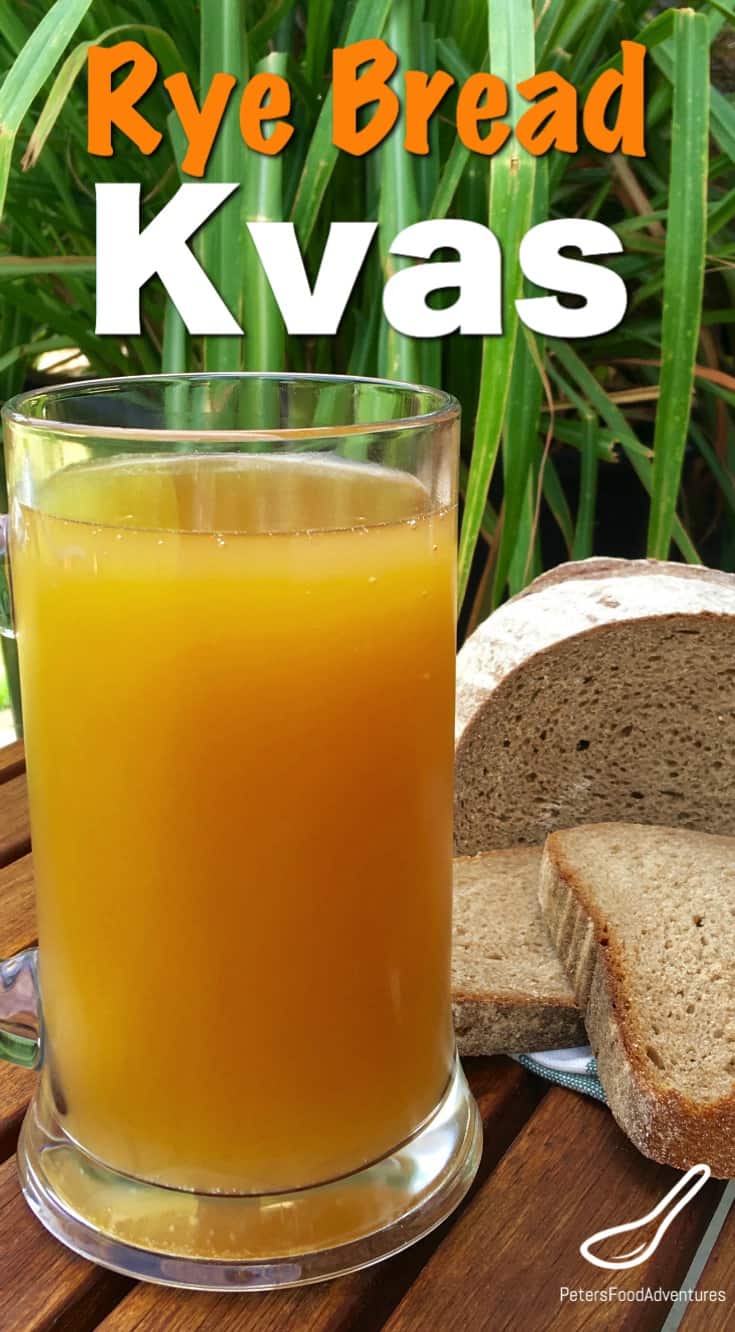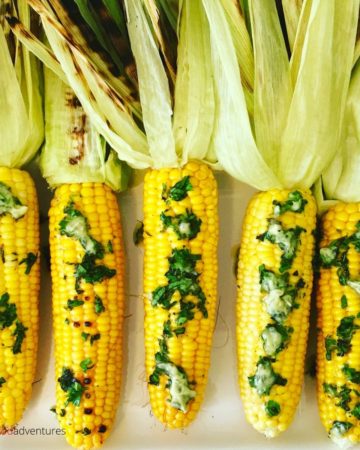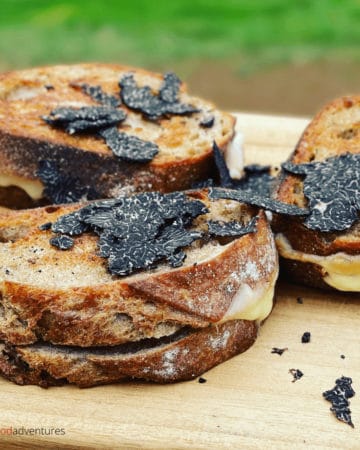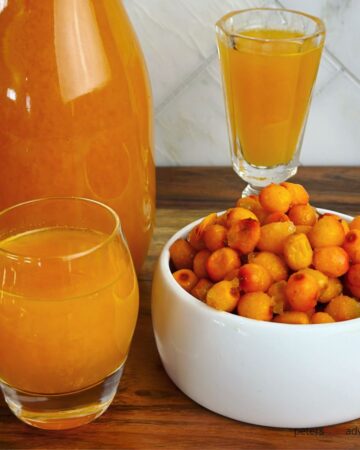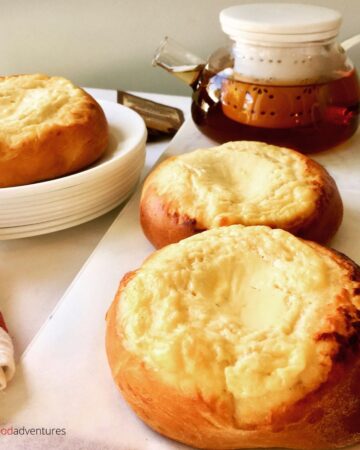This easy Bread Kvass recipe will become your next summer favorite! All you need is a few ingredients like Rye Bread, sugar, yeast and raisins. A refreshing summer drink popular in Russia and Eastern Europe.
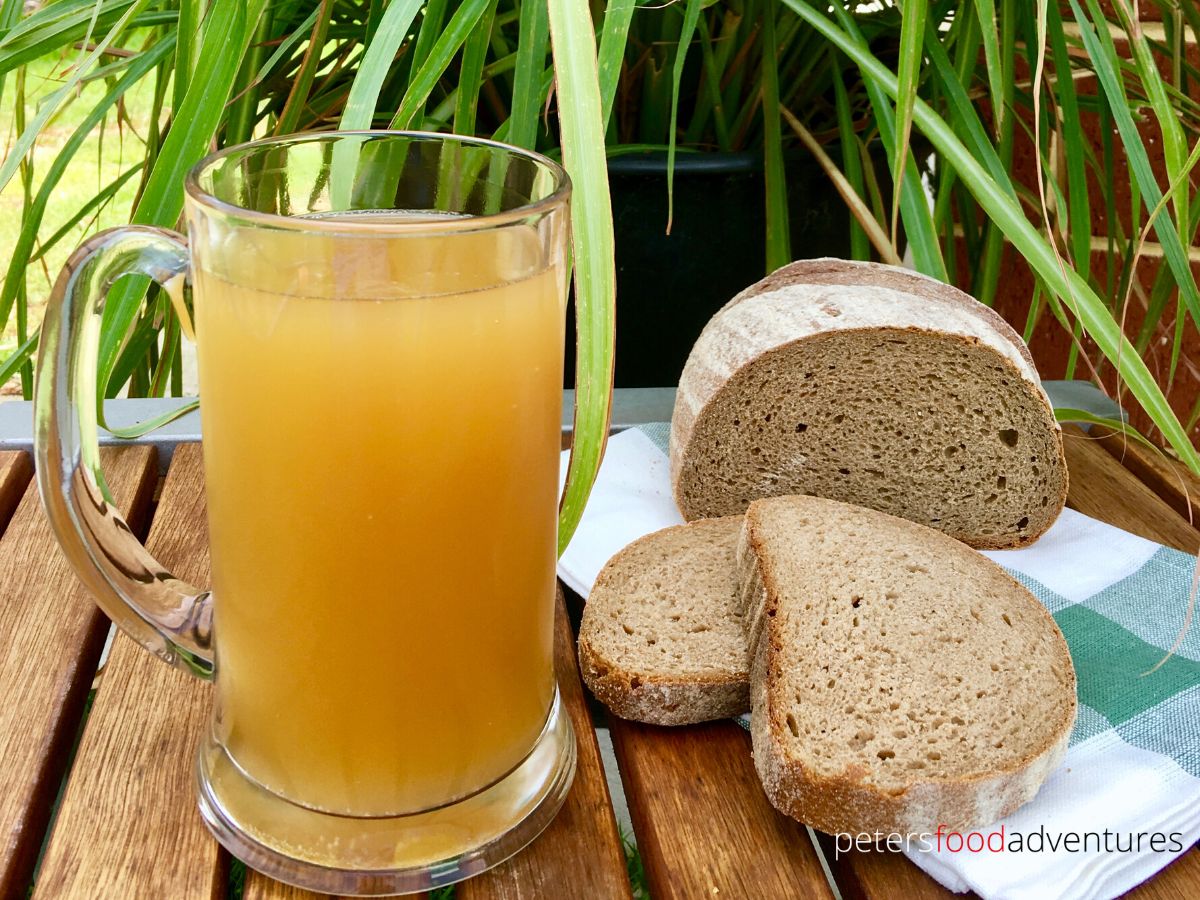
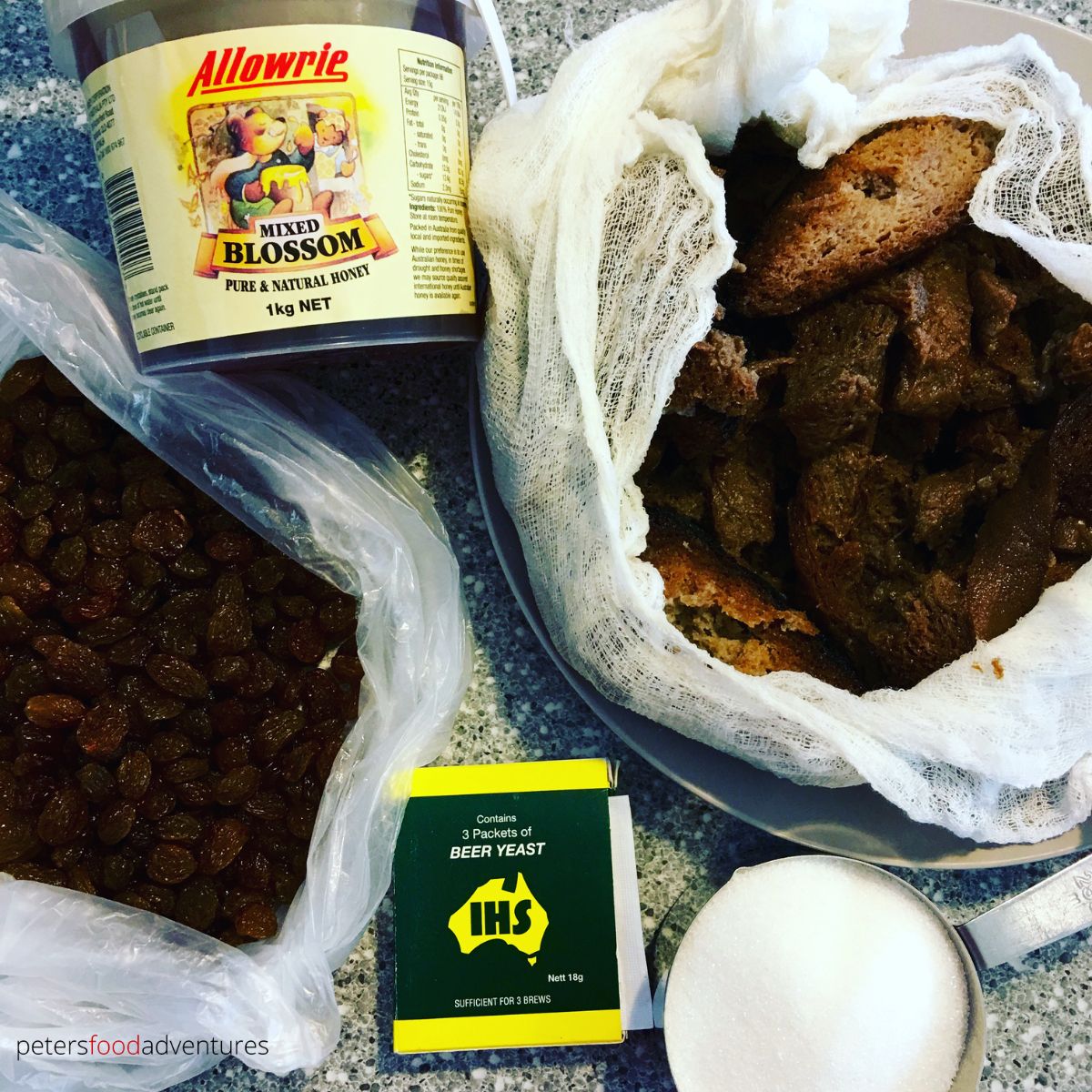
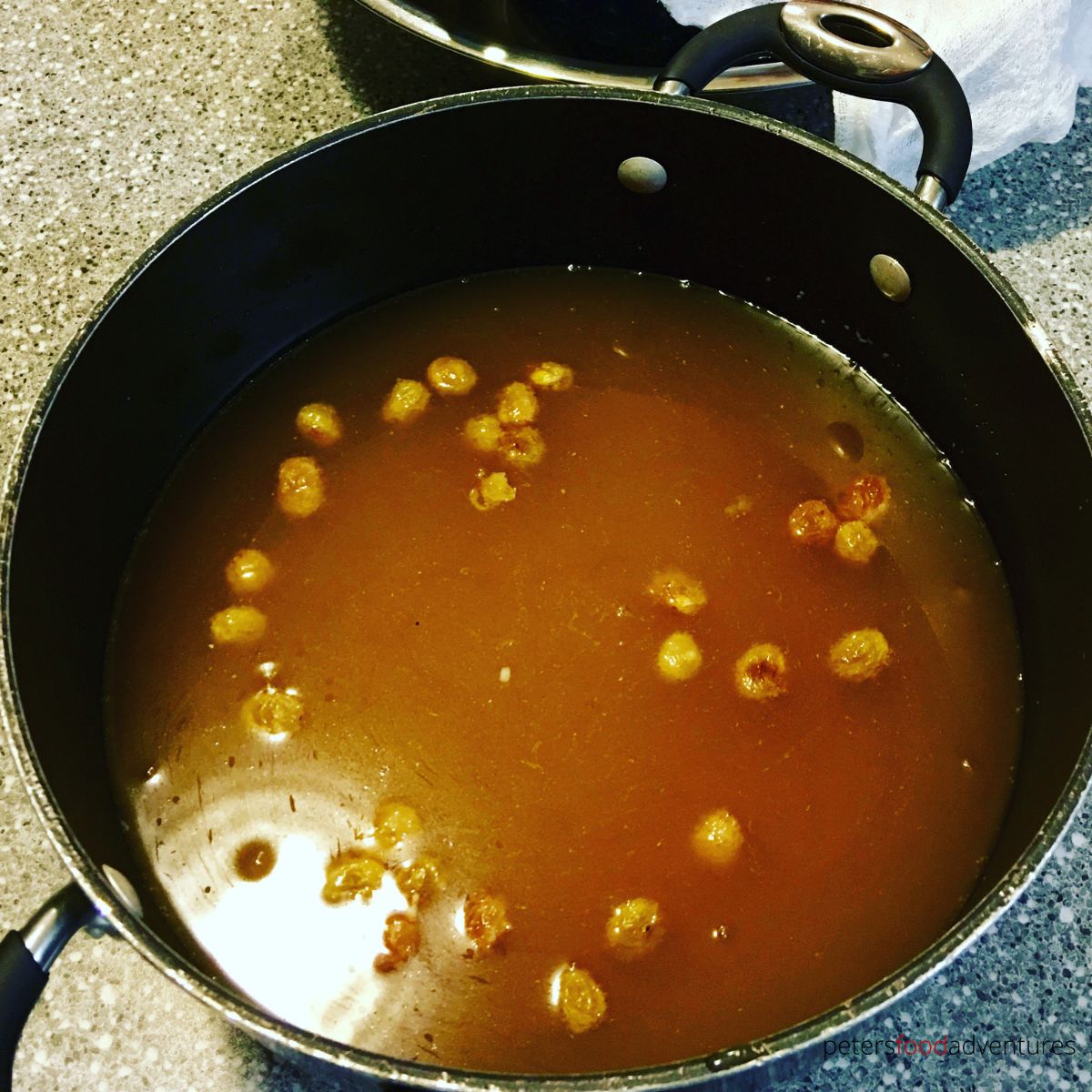
What is Kvass
Often called Russian Kvass (Квас) it's a refreshing yeast fermented drink that is usually made with Rye bread. It's popularity is almost like a version of natural Russian Coca-Cola that has been drunk for hundreds of years in Eastern Europe. Don't worry, it tastes nothing like Coke! It's more similar to a Kombucha, but without the probiotics.
In Soviet times, there was a large 'barrel' of Kvass on wheels that people would line up to buy a glass of Kvass, sometimes drunk from a communal cup. Thank goodness that doesn't happen anymore. However barrels and Kvass are synonymous now, as you see in my Sochi video!
Other Types of Kvass
There are many types of Kvass recipes out there, fermented with many different fruits or sometimes vegetables. Here are some common types.
- Raspberries
- Sweet Potatoes
- Apples
- Beet Kvass - the most common Kvass outside of Russia
Is Kvass Alchoholic
Kvass usually has less than 1% alcohol content, but that will increase the longer it ferments. Many people consider it non-alchoholic, and if you buy it in your Eastern European grocery you will be safe. However, homemade Kvass always tastes better! It's like a non-alcoholic beer, but sometimes has low alcohol. 🤣
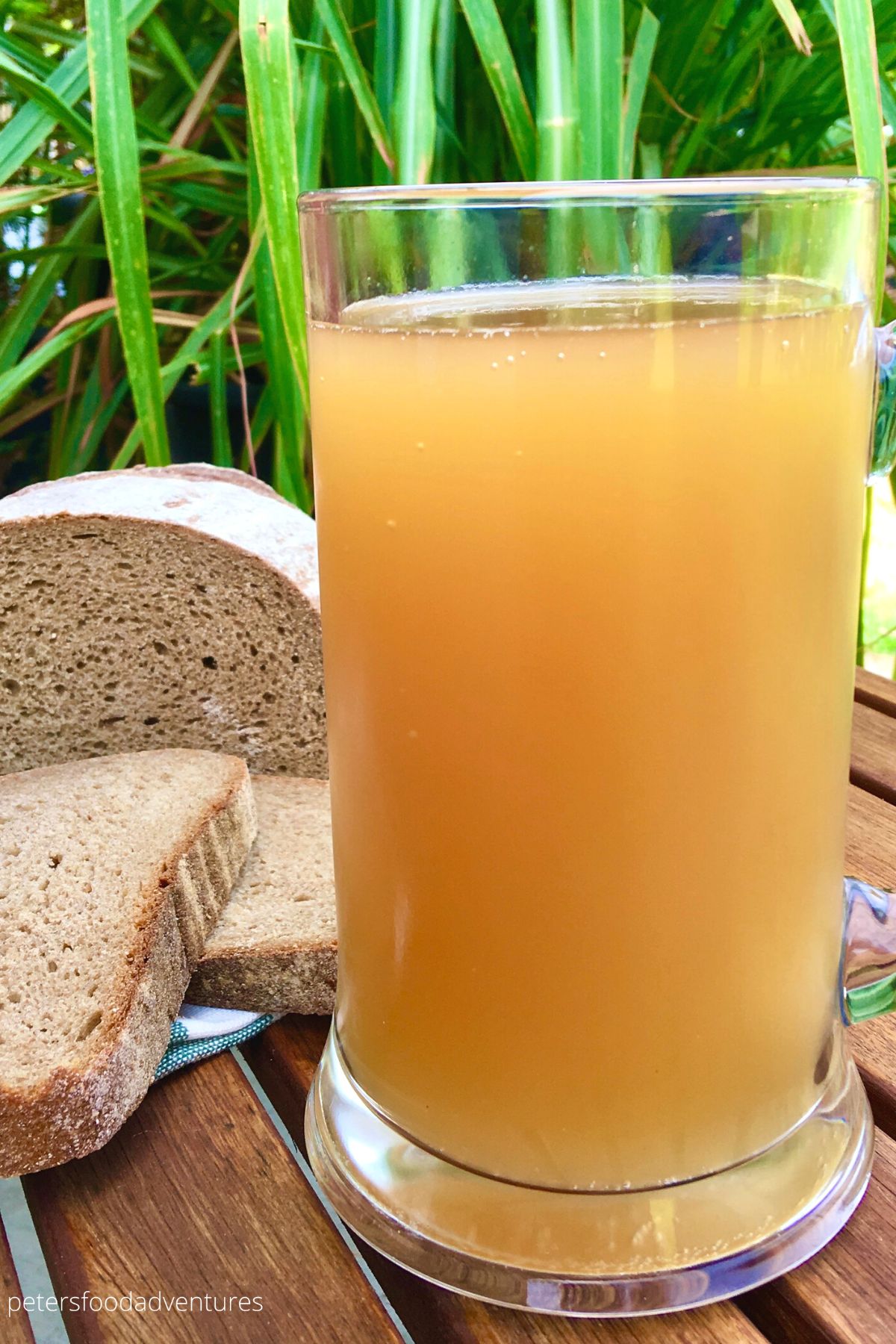
How to Ferment Kvass
There are many different types of Kvass recipes. Some recipes, like my Beet Kvass, are naturally fermented and full of probiotics. However, this Rye Bread Kvass recipe uses Brewer's Yeast I bought from my supermarket. An easy Kvass recipe that tastes delicious!
Day 1 (best prepared at night)
- Toast dark Rye bread in your toaster on a dark setting
- Bring pot of water to boil. Remove from heat, add toast and leave in infuse overnight
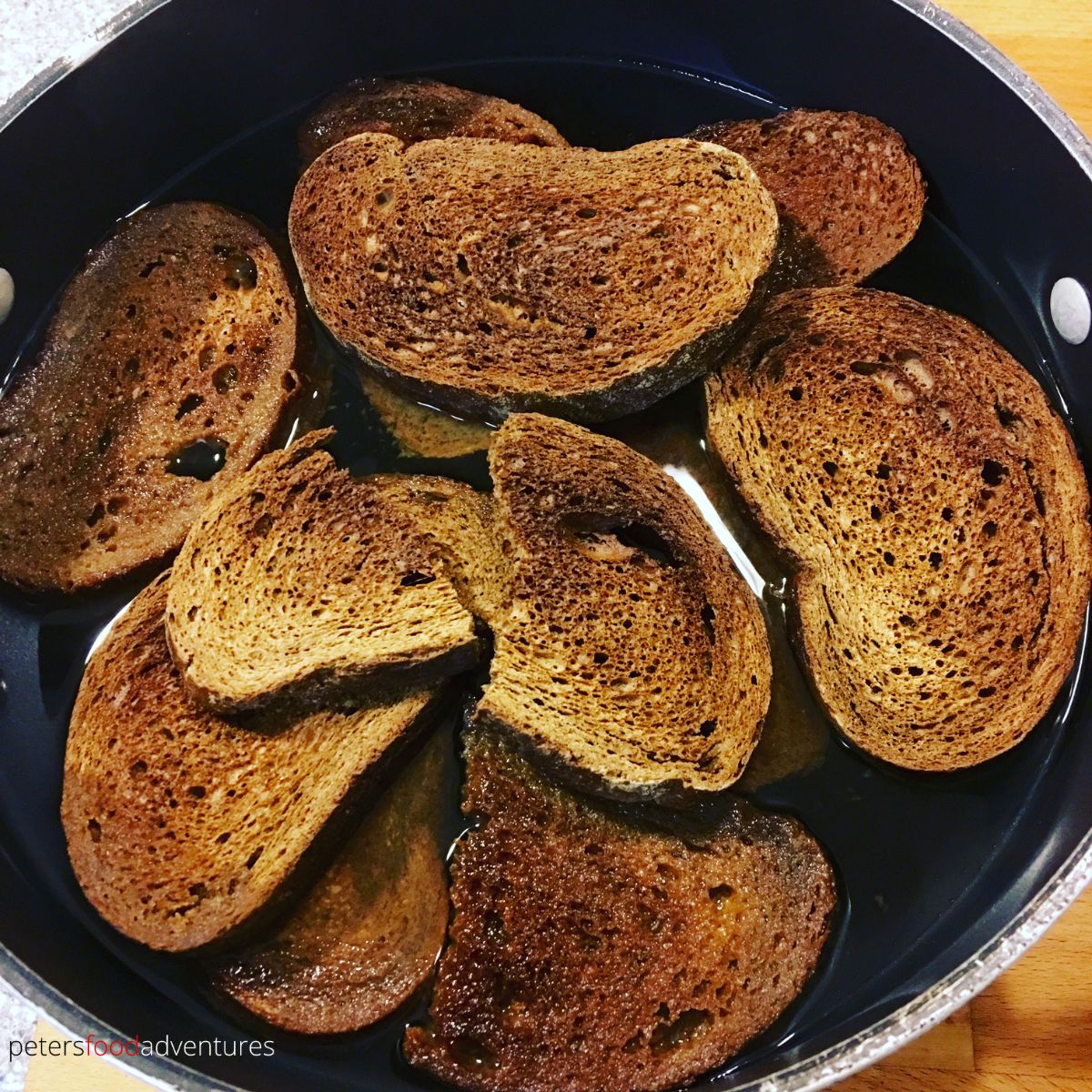
Day 2
- Strain the bread drink using a cheesecloth to remove any bread floaties
- Pour into a clean pot and warm up to 95°F/ 35°C, feels pleasantly warm
- Remove from heat and add yeast, sugar, honey and raisins
- Allow to site for about 8 hours, you will see foam on the surface
- Strain through a cheesecloth, and bottle in plastic soft drink bottles
- Refrigerate in the fridge for 3 more days, carefully releasing pressure daily
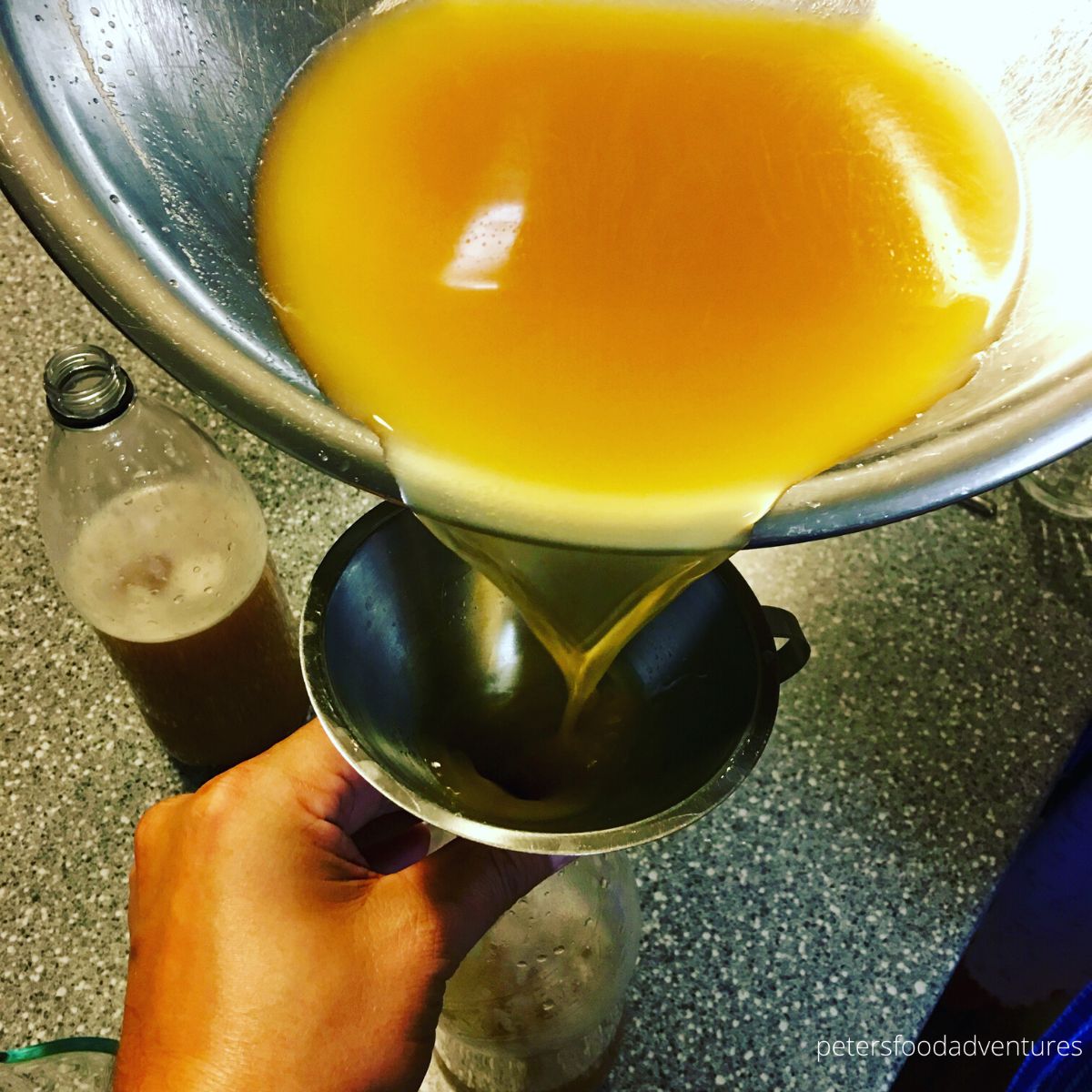
Brewer's Yeast vs Active Yeast
This Kvass recipe is made with Brewer's Yeast, which is best yeast to use for fermenting drinks. You're not making a cake here. Brewer's Yeast has a stronger, yeasty flavor. Here in Australia, it's sold in 7 gram packets, which is perfect for this recipe. If you don't have Brewer's Yeast, substitute with 2 teaspoons of Active Dry Yeast in this recipe.
Kvass in Soup
It's also used in Russian soups, such as Okroshka with Kvass. However, this recipe is too sweet to use in soup. Soup shouldn't be sweet, so you can buy Kvass for soups that is suited for savory summer soups.
Best Bread for Kvass recipe
It can be hard to find a dark Eastern European Rye bread when making Kvass. I always look for a dark Rye break, the darker the color the better. You can use German Rye bread as well, but make sure it's dark!
Popular Slavic Fermented Drinks
- Mushroom Tea - basically Kombucha (and not new to Eastern Europeans)
- Bread Kvass with Blackcurrants - added for extra flavor
- Sweet Beet Kvass - not the salty soup Kvass that is popular in the west
They say that the peasants drank Kvass more than water. The process is quite commercialised now, where you can buy Kvass in the grocery store, beside the Pepsi. However it just doesn't taste as good as the home brew. Bon Appetit! Приятного аппетита!
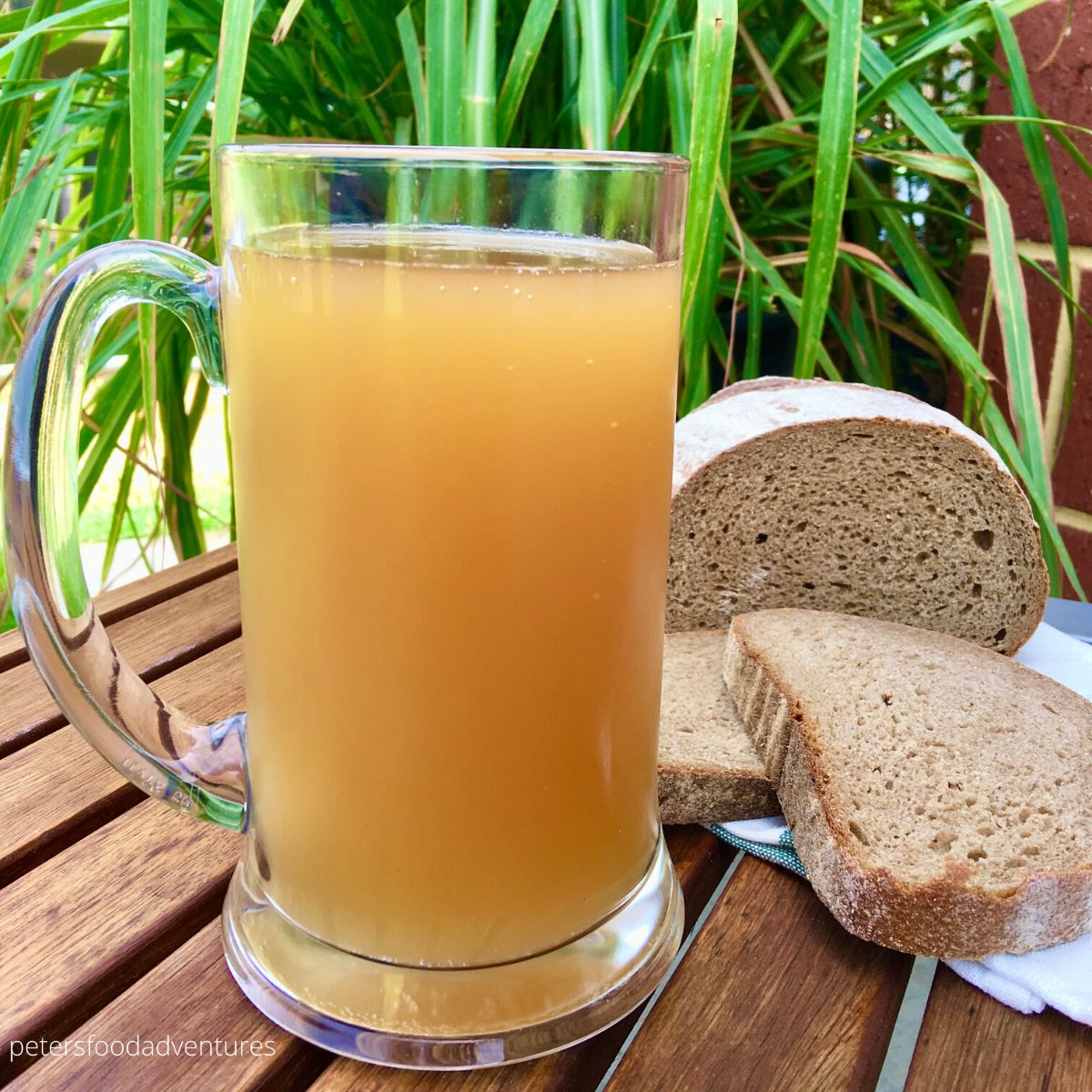
Equipment
- 1 Stock Pot
- Cheesecloth for straining
Ingredients
- loaf dark Rye Bread 1lb/450g
- 5 quarts water 5 litres
- 1 tablespoon honey optional
- 1 ½ cups sugar
- 2 teaspoons Brewers Yeast or Active Dry Yeast 7 grams or 1 packet
- 2 tablespoons raisins
Instructions
Day 1
- Toast the bread on a dark toaster setting. The darker the toast, the darker the kvas will be, a little blackness is ok. (dont burn the toast too dark)
- Fill large stock pot with 5 quarts of water and bring to a boil. Remove from heat, add toast and leave to infuse overnight.
Day 2
- Strain the bread drink using a cheesecloth to remove any bread floaties. Discard the bread.
- Quickly warm up the kvas on the stove, until it is warm and around 35°C/95°F. Don't heat water higher than 110°F/45°C, or it will kill the yeast. If the water is cold, the yeast won't activate.
- Remove warmed Kvass from heat. Add the yeast, sugar, honey and raisins. Stir to make sure the sugar and honey are fully dissolved. Allow to sit for about 8 hours. You will see foam and bubbles start to form in the Kvass.
- Strain Kvass through a cheese cloth. Put 2-3 raisins in each soft drink bottle, pour the Kvass and seal tightly. Only fill the bottle about ⅔ of the way, releasing pressure daily as it continues to ferment in the fridge.
- After about 3 days in the fridge, your Kvass is infused, fermented and ready to enjoy!
Video
©PetersFoodAdventures.com
